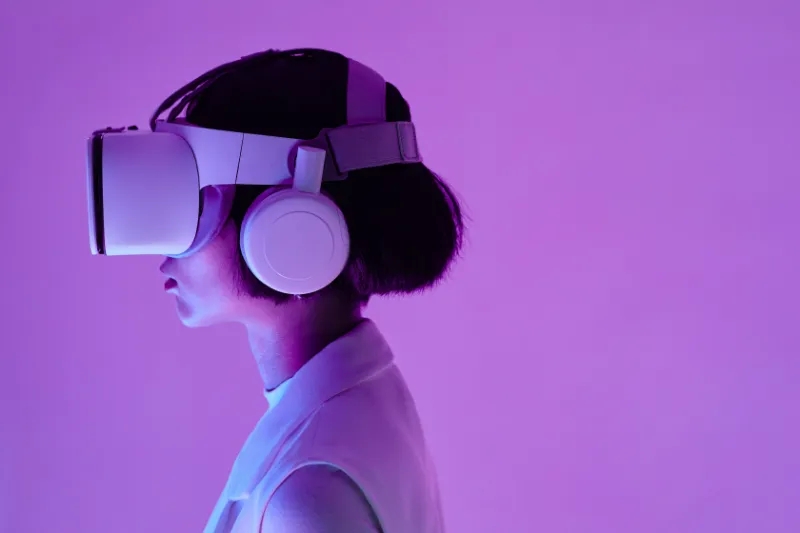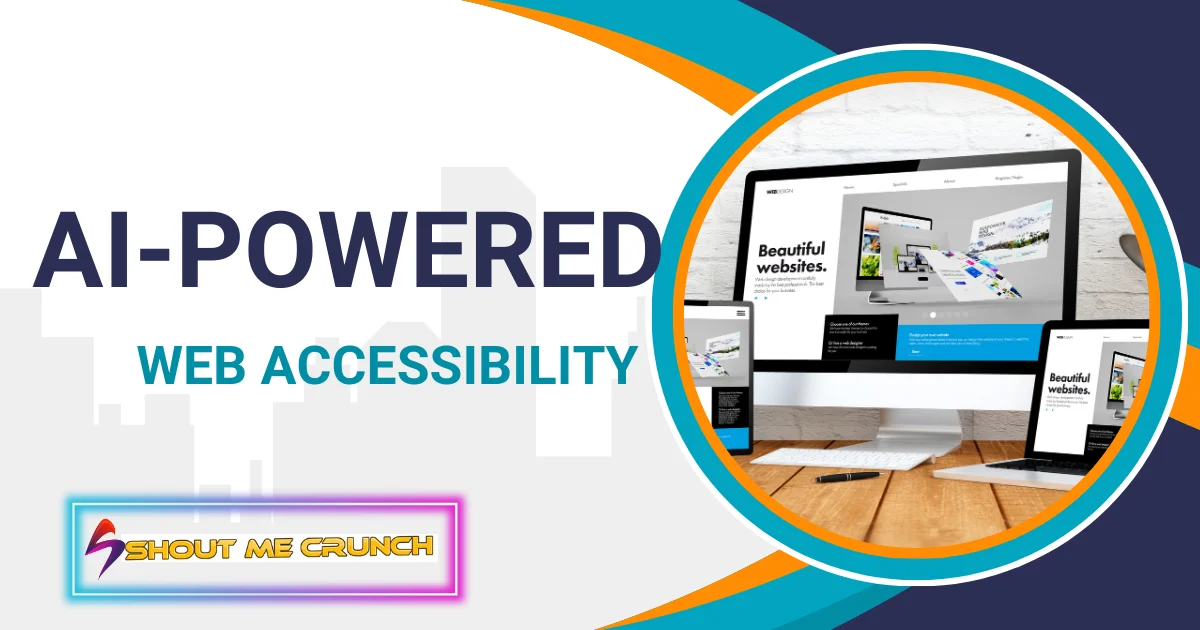It is necessary to ensure that websites are accessible to all users in today’s digital age. The web acts as an interface to information, services, and connections. Web accessibility is about more than just compliance. It is about creating an inclusive digital environment accommodating persons of varied abilities.
Artificial intelligence (AI) has emerged as a disruptive force in this pursuit, altering design processes and improving website accessibility. This article digs into the fascinating area of AI-powered web accessibility, looking at how it is reinventing inclusive experiences for people worldwide.
Before we continue on the trip of AI’s influence, let us first establish the context by comprehending the essence of web accessibility. Breaking down barriers and making digital content and services available to everyone, regardless of physical or cognitive limitations, is the goal of web accessibility. It ensures that people with disabilities can easily access, comprehend, and interact with online content.
Why Web Accessibility is Important?
Web accessibility is more than a term; it is also the foundation of a digital world. It promotes diversity and inclusion. Consider how difficult it would be to utilize a website if you couldn’t see it or had difficulty understanding the material owing to cognitive problems – this is a daily reality for millions of individuals. That is why online accessibility is essential.

It entails creating online environments that are functional and accessible to everyone, regardless of their ability. Consider a website a door that opens for everyone, irrespective of the physical or cognitive keys they possess. By using inclusive design techniques, we ensure that no one is left out of the digital world, making the internet a genuinely global and accessible community.
What are the Web Accessibility Policies?
Web accessibility policies are the guidelines that guide us in creating digital environments. that are also accessible to everybody. They serve as a model for a more inclusive internet that accommodates all users’ requirements. It becomes essential for developers, designers, and content creators to be conversant with and respect specific guidelines while designing online experiences.
By doing so, we are effectively creating a digital cosmos in which boundaries are removed, and everyone has fair and equal access. It’s about building a welcoming online environment where everyone can interact, discover, and connect, not just follow the rules. These criteria represent the breadth and depth of the human experience and serve as a moral compass as we traverse the digital universe.
Does Accessibility Affect SEO?
SEO and accessibility are two sides of the same coin. They both aim to increase website usability and search engine optimization. Search engines find it easier to retrieve and index content on websites. These are created with accessibility in mind.

Additionally, it makes the website more accessible to reach and see online. Accessibility and SEO have a unique relationship that goes beyond algorithms. They are both focused on creating an inclusive, engaging, and relevant digital environment for all users. Building a website with SEO and accessibility in mind is, therefore, beneficial for both viewers and search engines.
Will AI Replace Web Developers?
Web developers are the wizards who make the web attainable. They utilize their abilities and ingenuity to build one-of-a-kind digital products. However, they are not alone in their goal. AI is their sidekick, a super-intelligent aide who assists them with the demanding lifting.
While AI can perform repetitive jobs and enhance problem-solving abilities, web developers can concentrate on the big picture and the human touch. AI is not a danger to web developers but rather a partner. It is a collaboration that combines the best of human ingenuity with the efficiency of artificial intelligence. So, web developers, don’t worry – your magic touch is irreplaceable in this ever-changing technological dance.
What are the AI Role in Shaping Inclusive Design?
AI is more than just a buzzword; it is a driving force for change in the world of web development. It is redefining the landscape of inclusive design practices by offering novel approaches to accessibility issues. Unlike traditional methods, AI enables dynamism and customization that were previously difficult to attain.

User Profiling and Personalization:
Imagine a website that learns about your preferences, anticipates your needs, and tailors its interface to meet those demands. AI makes this possible by generating user profiles that reflect individual interests. AI personalization ensures a tailored experience, whether altering color contrasts for greater visibility or rearranging material depending on navigation patterns.
Accessibility Audits that are Automated:
Traditional accessibility audits were time-consuming and frequently allowed space for oversight. Conversely, AI automates the auditing process, discovering accessibility impediments and recommending remedies in real-time. Not only does this save time, but it also ensures a more thorough evaluation of web information.
Content Personalization:
One size does not fit all in the digital age. AI offers dynamic content customization, allowing websites to change text size, color, and layout to accommodate users with varying skills. This guarantees that the material remains understandable and entertaining for many audiences.
What are the Techniques and Tools for AI?
Image and video analysis:
Images and videos can be substantial hurdles for visually challenged users. AI-powered systems scan visual content and provide audio descriptions, giving a more immersive experience for screen reader users.

Language Simplification and Translation:
Cognitive limitations might make it difficult to comprehend complex language. AI tools simplify and translate content, making it more accessible and understandable to individuals with a wide range of cognitive capacities.
Sign Language Interpretation and Captioning:
AI-powered sign language interpretation and captioning help deaf and hard-of-hearing people communicate. This guarantees that video content is inclusive of all people and reaches a larger audience.
AI Implementation Techniques in Web Development
AI tools like machine learning and natural language processing are critical to implementing inclusive design. Machine learning algorithms continuously optimize personalization by analyzing user behavior, while natural language processing improves content accessibility for users with various cognitive skills.
AI Success Stories Case Studies
Let’s look at real-world examples of how AI has improved web accessibility.
E-commerce Accessibility Improvement:
An e-commerce platform uses artificial intelligence to personalize product recommendations based on customer preferences. This improved the shopping experience for all customers and dramatically increased the platform’s accessibility for persons with cognitive limitations.

Overhaul of an Educational Website:
An educational website integrated AI-driven content customization, tailoring text size and complexity to each student’s learning capacities. As a result, students with varying needs benefitted from a more inclusive learning environment.
Quantifiable Enhancements
These case studies demonstrate the successful implementation of AI solutions and quantifiable gains in website usability and user happiness. Metrics like lower bounce rates, more time spent on site, and positive user feedback demonstrate AI’s transformative impact on web accessibility.
Considerations and Obstacles
As we embrace the potential of AI in web accessibility, we must negotiate the obstacles and ethical concerns that come with this technical evolution. Building a truly inclusive digital world requires ensuring responsible AI use, correcting biases, and maintaining transparency.
What is the Future Trends of AI?
The adventure does not end here. Emerging technologies continue to affect the future of artificial intelligence and web accessibility. The road ahead provides excellent opportunities for building even more inclusive online experiences, from advances in picture recognition to the incorporation of AI in virtual and augmented reality.
Conclusion
AI is an example of progress in the ever-changing world of web development. It is leading us toward a more inclusive future. The integration of AI and online accessibility is more than a scientific marvel. It is a dedication to building digital spaces where everyone can fully participate regardless of ability. Let us join forces as developers, designers, and users to advocate AI-powered web accessibility and create a digital future that leaves no one behind.


